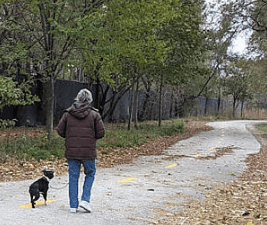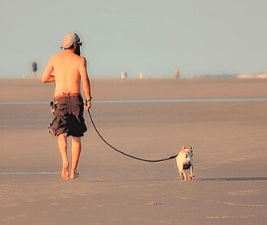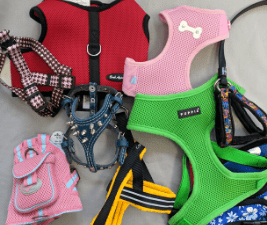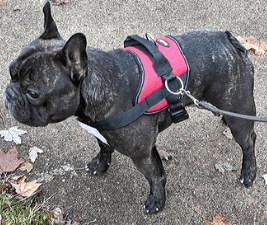We’re all creatures of habit. In our family, we have a saying that habit is the most powerful force in the universe. Chances are, especially if your routine is stable, you’ve fallen into a rut with walking your dog. You do the same thing at the same time every day. And it’s become a chore rather than a fun time with your dog.
Turn it around
Remember when you first got your dog and every walk was an adventure? Your new dog had to check everything out, took joy in every little thing. By extension, you looked at things a little differently, too. And you may even have looked forward to walking your dog.
You can bring it back. Make it a chance to relax and have fun rather than another item on your “must do” list.
Idea #1: Vary your route
When you leave the house, turn the other way. Whatever corner you reach, turn the opposite direction from your “normal” choice. Sometimes we don’t even realize that we’re always making the same choices until we pay attention to what those choices are.
If you don’t have a set route, and you’ve memorized every single building/tree/mailbox in the neighborhood, pile into the car and go somewhere else for a walk. Just a little change of scenery can make a difference.
Idea #2: Make walking your dog playtime
When your dog isn’t paying attention, stuff a favorite dog toy into your pocket. Decide in advance to stop at a specific place on your walk, pull out the toy and play with your dog. Your dog will be surprised and delighted by the “recess.” Playing with your dog emphasizes that you are the source of all good and fun things, and it may even help your dog pay more attention to you on future walks. Playing games with your dog is the most effective method of dog training, too. If he/she never knows when the toy is showing up, your dog will check in with you more often.
Hope even lets her French Bulldog Torque carry the toy on the way back home. It makes him happy and keeps him from sniffing every tree and bush.
Idea #3: Invite a friend
Chances are your friends with dogs are in the same rut. Make a plan to meet someplace to walk your dogs together. If the dogs know each other already, they’ll be delighted to see their “friends.” If they don’t, meet someplace with plenty of space so the dogs aren’t thrown together. This is one of the best ways to introduce dogs to each other – on “neutral” territory with plenty of room to advance and retreat.
If your dog isn’t particularly dog-friendly, invite a friend without a dog to come along. It gives you the chance to catch up and gets everybody out for some fresh air. It’s a perfect opportunity to get together with someone while heeding the “social distancing” guidelines we’re living with.
Just change it up
Habit is comfortable, but it’s not particularly interesting or fun. Just making small changes to everyday routines makes life more interesting, even if you’re just walking your dog.












